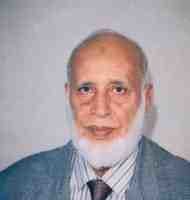Balochistan basin of Pakistan deserves a second look
Viqar-un-Nisa Quadri, S.M.G.J. QuadriThe event of UMC Pakistan, a unit of United Meridian Corp. of Houston, obtaining an exploration license covering 7,480 sq km in the Gwadar district off Makran in the Balochistan basin is good news. 1
Exploration consultants
Riyadh
The extent of exploration surveys and drilling place this 300,000 sq km basin in the frontier category with confidence in the area speculative due to inadequate data, although hydrocarbon potential may be regarded as moderate to high by comparison with its analogs in other parts of the world.2-3
In their simplest form on aerial view, Balochistan's mountain ranges appear to be an orographic link between the prolific Zagros of Iran and Kirthar Sulaiman, the westward boundary of the oil producing Indus basin. This is misleading, as actually this region forms a gap between Arabian and Pak-Indian Gondwana fragments over which no continental collision with Eurasian Central Domain has taken place.4
However, the presence along the Makran coast of spectacular volcanoes spewing gas charged water, if not anything else, justifies a second look, or rather a first for some parts, at the Balochistan basin.
Tectonics, geology
As a result of the relative movement of Indo-Pak, Eurasian and several microplates like Lut, Turan, and Afghan, the transform system of Chaman-Ornach Nal sinistral faults was born. This transform system separates the Indus and Balochistan basins.
From north to south, the Balochistan basin comprises of Kakar Khorasan basin east of, and Chagai magmatic arc west of the Chaman fault, Hamun-i-Mashkhel basin and Kharan platform(?), Siahan range, and Makran accretionary prism (Fig. 1 [67557 bytes]). The Kakar Khorasan segment is the southward extension of the prospective but unexplored Kundar-Urgun basin of Afghanistan. It may be an epi-sutural forearc basin where the faults may have released the subduction zone from compression to extension. The Bouguer gravity anomalies indicate thickening of the crust towards the northwest, indicating the flysch deposits of this area are underlain by continental and not oceanic crust.5
The Hamun-i-Mashkel basin is a subsiding upper slope or forearc basin, as confirmed by gravity and magnetic data. This together with the Kharan block belong to Stocklin's Central Domain,6 which in spite of being subjected to intense Kimmerian and early Alpine tectonism, includes large parts characterized by early stabilization resulting in formation of median mass like blocks with platform type sedimentary covers ranring from Cretaceous to Recent. A generalized stratigraphic column is given in Fig. 2 [29386 bytes].
Published data and Landsat images indicate that the Makran is a large sedimentary prism accreted during the Cenozoic over a relict of Neo Tethys.4 It is an analog, therefore, albeit of much younger age, of the Caspian Sea of Stocklin's North Domain of Oceanic Crust, a relict of Paleo-Tethys,6 incidentally a site of several oil fields.
The Makran coastal and offshore basin is not typical of an arc-trench system. Rather it is largely anomalous in its characteristics, with a wider arc-trench gap, 5 km, a possible weak shallow Benioff zone, a largely exposed accretionary prism, and a significant volume of post middle Miocene shelf and not trench and slope deposits.7
The well dated stratigraphic record in coastal Makran begins in early Middle Miocene and extends to Late Pleistocene, based upon calcareous nannofossils (Fig. 3 [39339 bytes]). The middle Miocene and older phase was dominated by deposition of turbidites on a vast deepsea fan that originated from the east, supplied from uplands raised by the collision of Indo-Pak and Eurasian plates and a proto Indus.7
Exploration results
Aeromagnetic data have been used to detect the presence of and depths of intrusive rocks of North Balochistan.
A sedimentary section as thick as 15,000 m is indicated in some parts of the basin. Gravity indicates clearly some large scale highs and lows, which most often correspond to features assumed in the flysch. Large scale structures like Kech band and Gokh prush coincide with gravity highs, while Turbat valley is marked with a deep low, bounded north and south with sharp gradients indicating large faults.
Tidewater's refraction seismic proved very misleading. Marathon's reflection seismic surveys, 1973-77, have mapped several anticlinal features, both onshore and offshore. Gentle well defined anticlines have been delineated in the upper sequence, while structures in the deepwater sequence are mostly steep and complex. A seismic section representative of Makran offshore is shown in Fig. 4 [86786 bytes].
The following wells have been drilled in the Balochistan basin:
1. Chandragup 1, Burmah Oil, 1916. TD 810 m. Sarpai anticline test. Gas show in well, methane 75%, ethane 9%.
2. Dhak 1, Hunt Oil, 1956. TD 2,563 m. Sarpai anticline test. Strong gas blowout at about 1,220 m.
3. Dhak 2, Hunt Oil, 1956. TD 4,456 m, formation Miocene. Minor gas shows. Strongly faulted by a major longitudinal thrust fault and transverse faults with deep seated folding more gentle than surface folding-subsurface crest shifted with respect to surface crest.
4. Kech Band 1, Tidewater, 1962. TD 3,349 m. Subvertical Panjgur flysch.
5. Garr Koh 1, Marathon, 1975. TD 3,623 m. The section was inverted below 3,109 m; i.e., structure is overturned or thrust faulted. Normal pressures, 22 gas shows with heavier hydrocarbons. Seismic review suggests a drilling site 1.5 km northwest could have avoided the fault.
6. Jalpari 1A offshore, Marathon, 1977. TD 2,008 m. Abandoned due to high pressure without reaching objective.
Source rocks
In general, the lack of adequate source data is a major drawback in assessment of hydrocarbon potential. However, there exist some encouraging factors.
- The Kwash oil seep of the Siahan Range (Fig. 1) is reported to be in rocks of Eocene age.
- Back reef facies associated with the Kharan formation consists of limestones with petroliferous odor and argillaceous limestone locally highly fossiliferous, and reefoid, have a petroliferous odor when broken. Adjacent shales are likely to be potential source rocks, too.
- Geochemical studies of surface samples from Makran indicate slope to basinal facies of the Miocene Parkini formation to be potential source rock.7 TOC occasionally exceeds 1% but is compensated by large volume of mud rock. Geothermal gradient is low, about 2° C./100 m. Gas seepages through mud volcanoes onshore and bubbling gas and turbid water offshore, mostly methane with traces of isotopically heavy carbon, suggest a thermally mature source at depth.
- Samples from the first 2,316 m of the Garr Koh well definitely contained migrated hydrocarbons. The hydrocarbons found in the first 1,219 m also appear to have been bacteriologically altered, resulting in naphthenic assemblage. Samples down to 2,377 m are judged to be immature, according to Guennel's kerogen evaluation. Below 2,377 m, samples are mature enough to be in the oil generating range, and on the basis of both organic carbon content and HC extract data are judged to be good source rocks. Shallower samples are probably good potential source rocks, simply lacking maturity at this site.8
Reservoir rocks
In Hamun-i-Mashkhel forearc basin, Kharan limestone of Eocene age has reservoir qualities. Crystalline and intrusives from the north can provide clean, quartzose, and feldspathic sandstones that can be good reservoir rocks at depth. In Makran coastal and offshore basin the Middle Miocene Panjgur turbidites, with porosity 10-25% in outcrops can be the best reservoir. Pliocene Talar sandstone and Pleistocene Chatti and Ormara sandstones are the less attractive potential reservoirs.
Play types
In Kakar-Khorasan, subsurface structures may be similar to those in the Zagros? entrapment mechanism in Hamun-i-Mashkhel basin may be both structural and stratigraphic as typical in forearc basins. Traps may be associated with deltaic, nearshore and submarine fans, as well as carbonate buildups.
The TA2 supercycle, Late Paleocene to Early Eocene limestones exposed in the Balochistan basin exhibit two distinct facies. One is reefoid light grey limestone comprised of corals, coral debris, algae and foraminifera with biohermal internal structure, while the other type is dark grey to black, bituminous with very scarce foraminifera and lower section completely void of fauna. Such a combination of reefoid limestone on borders of the Kharan plateau? and forereef limestone in adjacent paleotrough indicate the Kharan block to be relatively uplifted and surrounded by a barrier reef. The southern border is more attractive viz-a-viz depth and sealing. A similar reefal prospect is indicated in the axial part of the Central Makran range, as suggested by few outcrops of reefoid limestone.9
Several structures mapped by Marathon's seismic are large and well defined and believed to involve deepwater sediments. The Pasni area is of special interest as regional gravity shows its offshore extension to be an area where more dense (older) rocks are comparatively closer to the surface. A prospect assessment in such areas would be as follows:
Structure: steep, elongate, anticlinal closures.
Seal: Middle Miocene thick bathyal shale.
Source: Lower-Middle Miocene shelf shale.
(TOC 0.22-0.96, oil prone)
Middle Miocene Bathyal shale (not sampled)
Pre-Turbidite shale (not exposed or penetrated)
Maturity: Middle Miocene in early maturity below 2,377 m at 1.9° C. gradient. Gas seeps with thermally mature C2-C4 hydrocarbons.
It has been postulated by some authors10 that imbricated thrusts and tight folds could only be surface features, with structures at depth simpler, as supported by decreasing dip vs. depth in the Dhak 2 well drilled on the Makran coast, and the presence of tight and overturned anticlines in Panjgur and broad open synclines in Talar. There is no dearth of structure in the Makran offshore, but seismic with better navigational techniques is required for precise location of wells.
The most attractive areas would be near places like Pasni, where potential reservoirs may be reached without penetrating thick highly overpressured beds.
Conclusion
Oil producing analogs of the Balochistan type of basin4 include Cook Inlet, Alaska, with reserves of more than 1 billion bbl of oil equivalent; Sacramento Valley, Calif.; Santa Elena, Monabi, and Oriente, Ecuador; and Talara, Peru.
The Kwash oil seep of the Siahan range and gas spewing mud volcanoes along the Makran coast are evidence of source rocks mature enough for oil and gas generation in the Balochistan basin.
As Hedberg11 stated, although areas of shale diapirs and mud volcanoes may be unfavorable for hydrocarbon accumulation because of lack of extensive reservoir, the surrounding facies above, below, and laterally adjacent may be particularly favorable in their relation to both reservoir and source environments.11 Prediction of overpressure can be done from velocity profiles obtained during normal processing of multiple coverage seismic data, and structures selected with overpressure magnitude within control of state of the art drilling techniques.
References
1. Industry Briefs, OGJ, Mar. 25, 1996, p. 38).
2. Dickinson, W.R., and Steely, D.R., Structure and stratigraphy of forearc regions, AAPG Bull., Vol. 63, No. 1, 1979, pp. 2-31.
3. Hardling, T.P., and Lowell, J.D., Structural styles, their plate tectonic habitats, and hydrocarbon traps in petroleum provinces, AAPG Bull., Vol. 63, No. 7, 1979, pp. 1,016-85.
4. Quadri, V.N., Petroleum prospects of Pakistan and oil oriented exploration guidelines, Petroleum Institute of Pakistan Symposium, March 1980, Peshawar.
5. Kadri, I.B., Petroleum Geology of Pakistan, published by Pakistan Petroleum Ltd., Karachi, October 1994.
6. Stocklin, J., Main structural zones recognized in the Alpine ranges of Iran, Afghanistan, Pakistan, and Pamir-Karakorum West Himalayan region, Unido, April 1976.
7. Harms, J.C., Cappel, H.N., and Francis, D.C., Geology and petroleum potential of the Makran Coast, Pakistan, Offshore Southeast Asia Conference, Exploration III-Geology Session, February 1982.
8. Patton, Geochemical analyses of Garr Koh 1 well, Pakistan, 1976.
9. Movshovitch, E.B., Zones of oil and gas accumulation confined to buried reefs, V/O Technoexport, OGDC-TSD, Pakistan 1977, appenxis A-12, pp. 1-27.
10. Raza, H.A., et al., A new concept related to structural and tectonic behavior of Balochistan basin and its implication on hydrocarbon prospects, Pakistan Journal of Hydrocarbon Research, Vol. 3, No. 1, 1991, pp. 1-17.
11. Hedberg, H.D., Relation of methane generation fo undercompacted shale diapirs and mud volcanoes, AAPG Memoir 58, 1974, pp. 661-673.
The Authors
Mrs. V.N. Quadri is the first lady petroleum explorationist of Pakistan. She started as an exploration geophysicist soon after Oil & Gas Development Corp.'s birth and rose to become manager technical services and offshore departments and acting general manager exploration, contributing to OGDC's growth as Pakistan's leading petroleum organization. She has represented Pakistan in offshore industry workshops for developing countries sponsored by Unesco-IOC-Iocindio, Norad-NPD (Norway), and Oceanographic Commission (China). She has an MS in geophysical prospecting from the University of Michigan.
S.M.G. Jeelani Quadri has been regional manager of the public sector of OGDC. He was also exploration advisor to Marathon Pakistan Petroleum and Pakistan Shell Oil Co. After retirement from active exploration, he served in the oilfield equipment and services industry for about 10 years. He has a Bsc in geological and physical sciences from Queen's University and an Msc in geological sciences from the University of Toronto.
Copyright 1996 Oil & Gas Journal. All Rights Reserved.


